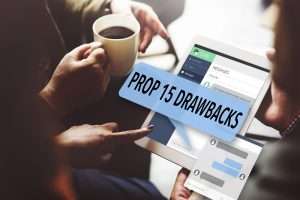 Letting employees know the downsides of the Proposition 15 split roll initiative is within the rights of employers, the California Chamber of Commerce is reminding members.
Letting employees know the downsides of the Proposition 15 split roll initiative is within the rights of employers, the California Chamber of Commerce is reminding members.
Proposition 15 on the November ballot is a $12.5 billion a year property tax increase—the largest in state history. The CalChamber strongly opposes the measure, which is filled with flaws and will hurt the small businesses which employ half of all California employees.
Proponents of Proposition 15 have admitted that homeowners are next. Contrary to what its supporters claim, Proposition 15 will not help local governments and schools recover from the COVID-19-induced economic crisis.
See the CalChamber No on Proposition 15 webpage for more information about the many reasons this costly and harmful initiative is opposed by more than 1,500 organizations, businesses, elected officials and individuals.
Communication Do’s and Don’ts
In its online “Guidelines for Political Communications to Employees,” the CalChamber points out that informing employees and stockholders about the impact of ballot measures is within the employer’s rights as a business owner—as long as the communication is done the right way.
The brochure emphasizes there should be NO PAYCHECK STUFFERS—employers cannot put any political messages in or on employees’ payroll envelopes.
Moreover, there should be no coercion, no rewarding or punishing employees for their political activities or beliefs (or threatening to do so).
Acceptable
Employers can communicate with their employees, stockholders and their families about the company’s support of or opposition to state legislation, regulations or ballot measures.
Also permissible is encouraging employees, stockholders and their families to support or oppose state legislation, regulations or ballot measures.
Political messages can be communicated to the business’s own employees and their families through such means as: internal mail systems (separate from payroll distribution), email systems, regular mail, bulletin boards, phone bank messages or employee meetings.
There is a distinction between the handling of internal communications (to employees, stockholders and their families) and external audiences (such as nonstockholder retirees, outside vendors, customers and passersby).
For more guidelines on political communications to employees, see the brochure at www.calchamber.com/guidelines.


